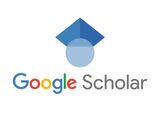Proposta de trabalho com blogs em turmas de 5° ano do ensino fundamental
DOI:
https://doi.org/10.14393/BEJOM-v1-n1-2020-50323Palavras-chave:
Séries iniciais, Blogs, Trabalho colaborativoResumo
Este texto apresenta uma pesquisa realizada por meio do trabalho colaborativo, que aconteceu em uma escola periférica da cidade de Uberlândia-MG, caracterizada como estudo de caso e tem uma abordagem qualitativa. Analisamos o trabalho, com o apoio de blogs, cujas páginas foram utilizadas para registros dos alunos e debates direcionados ao conteúdo de Geometria. O objetivo foi analisar se é possível promover uma alfabetização digital e conhecimento matemático através do uso da ferramenta Blog. Analisamos o trabalho, com o apoio de blogs, cujas páginas foram utilizadas para registros dos alunos e debates direcionados ao conteúdo de Geometria. Foram convidados para participar desse projeto os alunos que estavam cursando o quinto ano do EF. O projeto foi desenvolvido com 30 alunos, no segundo semestre de 2014, e outros 30, no primeiro semestre de 2015, utilizando os seguintes instrumentos: notas de campo produzidas por toda a equipe do projeto, fotografias e filmagens das atividades produzidas no laboratório de informática e em sala de aula, questionários, entrevistas, registros em espaço virtual: os blogs. A análise das pro- duções dos alunos do quinto ano com registros nos blogs. No que diz respeito à conclusão, a pesquisa demonstrou que blogs, softwares e dinâmicas diferenciadas de estudo atraíram a atenção dos alunos, deixando-os em sua maioria, instigados pelo desconhecido. O trabalho de produção de blogs, em grupos, desenvolveu nos estudantes a leitura e a escrita, tanto da linguagem materna como de símbolo e nomenclatura matemática. A interação dos alunos se tornou perceptível no decorrer do projeto, uma vez que propiciou o amadurecimento pessoal dos estudantes, o respeito, a tolerância e a cooperação mútua. Nesse sentido, concluímos que o projeto contribuiu sobremaneira para o processo de alfabetização dos alunos na linguagem materna, na matemática e na alfabetização digital.
Downloads
Referências
ALVARENGA, C. E. A. Autoeficácia de professores para utilizarem tecnologias de informática no ensino. Campinas, SP: [s.n.]. 2011.
BRASIL. Comitê Nacional de Educação em Direitos Humanos Plano Nacional de Educação em Direitos Humanos. Brasília: Secretaria Especial dos Direitos Humanos; Ministério da Educação, 2003. 52 p.
BRASIL. Ministério da Educação. Secretaria de Educação a Distância. Objetos de aprendizagem: uma proposta de recursos pedagógicos/Organização: Carmem Lúcia Prata, Anna Christina Aun de Azevedo Nascimento. Brasília: MEC, SEED, 2007. 154p.
BRASIL. Parâmetros Curriculares Nacionais: terceiro e quarto ciclo do ensino fundamental: Matemática. Secretaria da Educação Fundamental. Brasília: MEC/SEF, 1998. 148p.
BRASIL. Ministério da Educação: Programa Nacional de Tecnologia da Educacional. (ProInfo). Disponível em: ≪ http://portal.mec.gov.br/index.php?option=com_content&view=article&id=236:pro info-perguntas-frequentes&catid=152:proinfo≫. acesso em 30 de jan. 2015.
BRASIL. Comitê Nacional de educação em direitos humanos. Plano Nacional de Educação em Direitos Humanos. Brasília: secretaria especial dos direitos humanos; Ministério da Educação, 2003. 52p.
FIORENTINI, D.; LORENZATO, S. Investigação em educação matemática: percursos teóricos e metodológicos, 2a ed. Campinas, São Paulo: Autores Associados, 2007. 228p.
GOMES, M. J. Blogs: um recurso e uma estratégia pedagógica. In: António Mendes, Isabel Pereira e Rogério Costa (editores), Actas do VII Simpósio Internacional de Informática Educativa. Leiria: Escola Superior de Educação de Leiria. 2005, p. 311-315. Disponívelem: ≪ http://stoa.usp.br/cid/files/-1/3104/Blogs-finalnome.pdf≫. Acesso em: 25 abr. 2014.
JUNIOR, J. de P. Alfabetização digital: proposição de parâmetros metodológicos para capacitação em competências informacional. 168 f. 2009. Dissertação-(Mestrado)-Pontifícia Universidade Católica de Campinas-Centro de Ciências Sociais Aplicadas. Campinas, 2009.
OLIVEIRA, M. A. O. A utilização de Blogs como recurso pedagógico na educação matemática. In: Encontro Paulista de Educação Matemática, 10, 2010, Salvador - BA. 5p.
PONTE, J. P.; OLIVEIRA, H. A Internet como recurso para o ensino da Matemática, 2000. Disponível em: ≪ www.educ.fc.ul.pt/docentes/.../00-PonteOliveira%20(NOESIS).doc≫. Acesso em: 15 mai. 2014.
PORTAL do Ministério da Educação (MEC): Disponível em: ≪http://portal.mec.gov.br/≫. Acesso em: 20 de jan. 2015.
PORTAL do Ministério da Educação. O computador um instrumento da educação. Porto: Texto Editora, 1992.
RIBAS, C. S. C.; ZIVIANI, P. Redes de informação: novas relações sociais. 2008. Disponível em: ≪http://www.direitoacomunicacao.org.br/index2.php?option=com_docman&task= doc_view&gid=388&Itemid=99999999≫.Acesso em: 10 fev. 2014.
SANTOS, C. A.; NACARATO, A. M. Aprendizagem em Geometria na educação básica: a fotografia e a escrita na sala de aula. Belo Horizonte: Autentica. 2014.
SIMOKA, M. A. Mídias e tecnologias no ensino de matemática. 2008. 9p. Disponível enem: ≪http://200.189.113.123/diaadia/diadia/arquivos/File/conteudo/artigos_teses/MAT EMATICA/Artigo_simoka.pdf≫. Acesso em: 2 fev. 2014.
SITE da Prefeitura de Uberlândia. Disponível ≪http://www.uberlandia.mg.gov.br/2014/≫. Acesso em: 20 de jan. 2015.
SITE Triângulo Mineiro. Disponível em: http://triangulomineiro.com/noticia. aspx?busca=true&catNot=55&id=8751&nomeCatNot=Turismo. Acesso em 30 de jan. de 2015.
VYGOTSKY, L. S. A formação social da mente. São Paulo: Martins Fontes, 1991.
Downloads
Publicado
Edição
Seção
Licença
Copyright (c) 2020 Janaína Fátima Sousa Oliveira, Viviane Aparecida de Souza, Éliton Meireles de Moura, Arlindo José de Souza Junior

Este trabalho está licenciado sob uma licença Creative Commons Attribution-NonCommercial 4.0 International License.
- Os artigos publicados a partir de 2025 são licenciados sob a versão CCBY-4.0. Ao enviar o material para publicação, os autores estarão automaticamente, concordando com as diretrizes editoriais do periódico e assumindo que o texto foi devidamente revisado. A submissão simultânea de artigos a outras revistas é proibida, e, é também proibida a tradução de artigos publicados no periódico para outro idioma sem a devida autorização.
- Os artigos publicados em anos anteriores a 2025 são licenciados sob a versão CC BY-NC 4.0.









